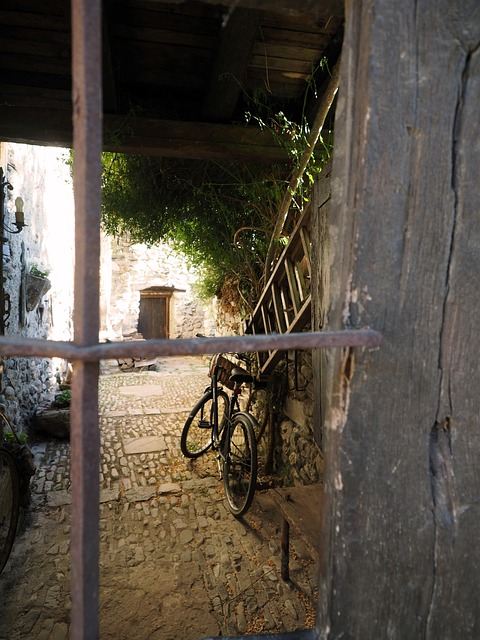The Kratom tree (Mitragyna speciosa), native to Southeast Asia's rainforests, is a visually striking evergreen that grows up to 30 meters tall. It has robust stems, large elliptical dark green leaves with vibrant yellow veins, and cream-colored flowers clustered in spikes. Its distinctive features include thick, waxy foliage and palm-like fronds, making it a valuable medicinal herb and integral part of the local ecosystem.
“Unraveling the Mysteries of Yellow Vein Kratom Powder: A Comprehensive Guide
The Kratom Tree (Mitragyna speciosa) is an intriguing plant, native to Southeast Asia, with distinctive leaves and a complex chemical composition. This guide delves into the world of yellow vein kratom powder—a rare and potent derivative. We explore its unique characteristics, from the tree’s botanical traits and growing conditions to the beneficial effects it offers. Learn about safe acquisition practices, dosage information, and real-world user experiences with this remarkable natural substance, ‘what does a kratom tree look like,’ and discover why it’s gaining popularity.”
- The Kratom Tree: A Botanical Overview
- – Description and appearance of the kratom tree (Mitragyna speciosa)
- – Where it grows and environmental conditions required
The Kratom Tree: A Botanical Overview
The Kratom tree, scientifically known as Mitragyna speciosa, is a striking and distinctive plant species native to Southeast Asia’s tropical rainforests. This evergreen tree typically grows up to 12-15 meters tall, with robust stems and sprawling branches that form a dense canopy. Its leaves are large, elliptical, and dark green on the upper surface, providing a striking contrast to their vibrant yellow veins. The underside of the leaf is often lighter in color, giving it a unique texture and appearance.
The tree’s flowers are small, cream-colored, and clustered in spikes, adding to its visual appeal. What sets the Kratom tree apart is its unique ability to thrive in specific conditions—it favors rich, well-drained soil and ample sunlight but can adapt to varying environments within its native range. This adaptability has made it a resilient and easily cultivable species, contributing to its growing popularity worldwide.
– Description and appearance of the kratom tree (Mitragyna speciosa)
The kratom tree, scientifically known as Mitragyna speciosa, is a tropical plant native to Southeast Asia, particularly prevalent in regions such as Thailand, Malaysia, and Indonesia. It thrives in dense forests and humid environments, growing up to 25 meters tall with robust, branching stems. The leaves are compound, meaning they consist of multiple leaflets attached to a central stalk, typically ranging from 10 to 20 centimeters in length. These leaves vary in shape, often elliptical or oval-shaped, and feature distinct venation patterns.
The tree’s appearance is distinctive, with thick, waxy foliage that provides excellent camouflage amidst the lush forest canopy. The flowers produced by the kratom tree are small, yellow to green, and grow in clusters, adding a vibrant touch to its overall aesthetic. This tropical beauty not only serves as a source of medicinal herb but also plays a crucial role in the local ecosystem, providing habitat and sustenance for various forest creatures.
– Where it grows and environmental conditions required
The Kratom tree, scientifically known as Mitragyna speciosa, is native to the tropical rainforests of Southeast Asia, particularly Thailand, Malaysia, and Indonesia. This robust, evergreen plant thrives in specific environmental conditions. It prefers warm climates with temperatures ranging from 70°F to 95°F (21°C to 35°C) and high humidity levels, typically between 70% and 90%. The tree grows best in well-drained, acidic soil with a pH range of 5.5 to 7.5, similar to the natural conditions found within its native habitat. What does a kratom tree look like? It can grow up to 30 meters tall, featuring palm-like fronds and small, delicate flowers that contribute to its striking appearance amidst the lush rainforest environment.
The Kratom tree, scientifically known as Mitragyna speciosa, is a captivating plant that thrives in specific tropical environments. Its distinctive appearance, with its robust stem and large compound leaves, sets it apart from other foliage. Understanding what a kratom tree looks like is essential for both enthusiasts and researchers alike, as it provides insights into the botanical origins of the popular yellow vein kratom powder, a renowned herbal supplement. This knowledge ensures sustainable practices in cultivating and harvesting this remarkable plant, ensuring its continued availability for various applications, including traditional medicine and modern wellness practices.














